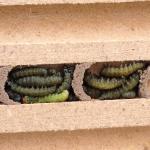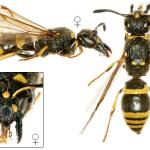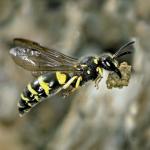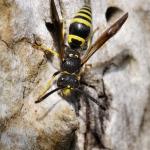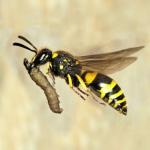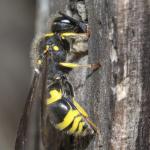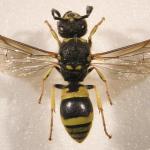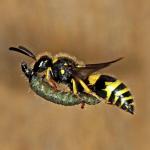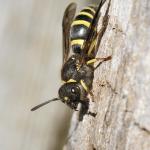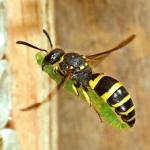Ancistrocerus callosus Thomson, 1870
Previously known as Ancistrocerus callosus (Thomson, 1870). Identification keys and general biology are given in Nielsen (1932), Spradbery (1973), Richards (1980), Yeo & Corbet (1995) and Archer (2000).
Cornwall to Kent, north to Cumbria and Northumberland (Gateshead) and Scotland (Roxburghshire and Aberdeenshire). Richards (1980) also gives Raasay in Scotland but no further details have been found. Also found on the Isle of Man, Isle of Wight and the Channel Islands. There is a single record from Ireland (Wicklow).
Overseas, occurs throughout Europe (including Norway, Sweden, Finland, The Netherlands, Luxembourg, France, Spain, Germany, Italy, Poland, Austria, Greece, Lithuania, Bulgaria, european Russia), north Africa, Turkey, to far eastern Russia, Mongolia and Japan.
This species is not regarded as being scarce or threatened. However, the relative lack of records since 1970 indicates that this species has undergone a significant decline. Its status needs to be reconsidered.
Found in a wide variety of habitats associated with its feeding and nesting sites, and prey habitats. Often found in gardens.
Univoltine, with males recorded from June until September, but most likely to be seen during July and August. Females have been recorded from February to October, with a small peak of abundance during May and a larger peak during August. Males and females emerge in late summer, when mating occurs; the males then die and the females overwinter as adults, to reappear in the spring (E. Budrys, pers. comm.).
Small brown and green microlepidopterous larvae, for example Tortricidae.
A tube-dweller, usually in bramble and elder stems, forming a series of linear cells separated by clay partitions. Also nests in holes in wood (dead logs and tree trunks, tree-stumps, telegraph poles and fences) and old mortar. Cell building occurs during the spring and early summer. When a cell is completed, an egg is laid and then several paralysed caterpillars are forced into the cell. The egg hatches after a few days and the larva consumes the prey in one or two weeks. The pre-pupal stage lasts for about one week and the pupal stage about two weeks. The newly-emerged adult moistens the clay partition to facilitate an exit.
Bramble, goldenrod, hogweed, nightshades and a thistle.
No British records found; overseas, Kunz (1989) gives the chrysid wasp Chrysis ignita (Linnaeus).
2001


